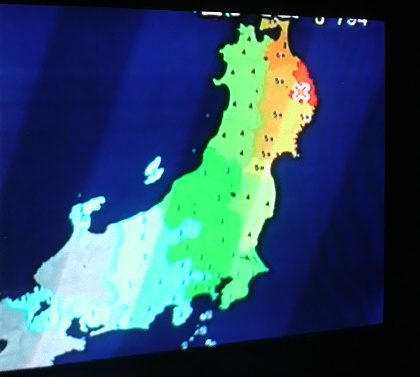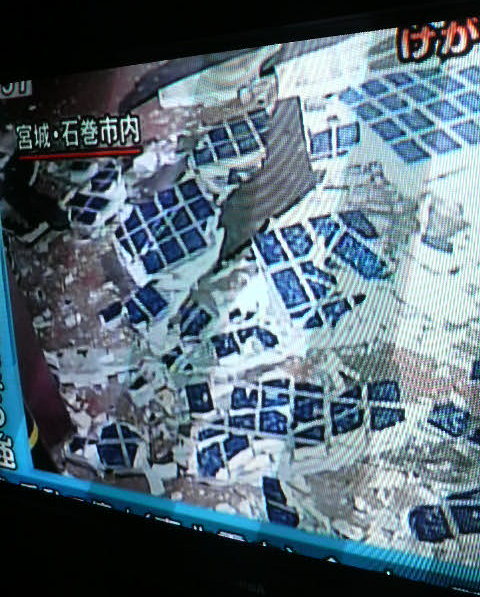 |
| There were 60+ people injured in this morning's earthquake, according to an IBC News report. |
 |
| X marks the spot: the epicenter of the earthquake, in Iwate Prefecture, Tohoku region of Japan. |
As Japan Probe reported:
A little over a month has passed since a strong earthquake hit Iwate Prefecture, and the area has been hit with another quake.
A strong earthquake jolted northern Japan early on Thursday, injuring at least 76 people, trapping hundreds in halted trains and temporarily cutting off electric power to thousands of homes.
The Japan Meteorological Agency (JMA) said there was no threat of a tsunami from the quake, which struck at 00:26 a.m. Thursday (11:26 a.m. EDT Wednesday) and had a preliminary magnitude of 6.8 and could be felt as far away as Tokyo.
At the time of this posting, NTV news was reporting a total of 109 injured, but the figure may increase as more information becomes available...Here is a shot of those broken tiles.
 |
| Earthquake damage, in Tohoku. |

No comments:
Post a Comment